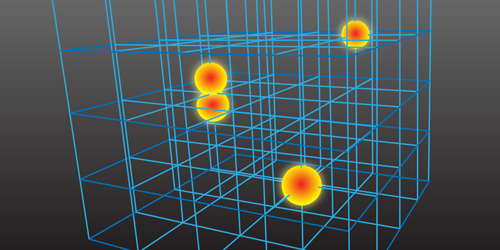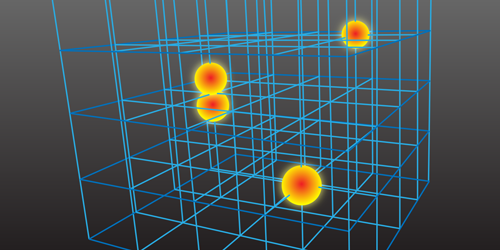Making Quantum Computations Behave
Calculations of a quantum system's behavior can spiral out of control when they involve more than a handful of particles. So for just about anything more complicated than the hydrogen atom, physicists forget about finding an exact solution to the Schrödinger equation and rely instead on approximation methods. Dean Lee of Michigan State University, East Lansing, and colleagues have now proposed an alternative method for when even the best approximation schemes fail. Their approach should be applicable to a variety of many-particle problems in atomic, nuclear, and particle physics.
The researchers considered the popular Bose-Hubbard model to illustrate their idea. In the model, which has been used to describe atoms in an optical lattice and in superconductors, bosons hop from point to point on a cubic grid, but they interact with one another only when they sit on the same site. Physicists are interested in how the particles behave as the strength of this interaction, , varies. Using the so-called perturbative approach, the particles’ wave function can be calculated for a simple case ( ) and then approximated at greater interaction strengths in terms of a power series in . But this formula blows up when is too large.
Instead, the team’s approach was to track the wave function’s changing shape at a few values of where the functions can be accurately calculated. They then used this shape “trajectory” to predict the ground-state wave function at values of that perturbation theory can’t reach, demonstrating the accuracy of their method for four bosons on a grid.
Lee says the technique, which he and his colleagues have dubbed “eigenvector continuation,” should work well for calculations that involve a smoothly varying parameter, like interaction strength, but it might struggle with a discretely varying parameter, like particle number. The researchers are now planning to dive into some computations that are known to defy conventional methods, such as simulations involving large nuclei.
This research is published in Physical Review Letters.
–Jessica Thomas
Jessica Thomas is the Editor of Physics.





